A bit of a different post this week. Many of my posts have featured my father’s photography, mainly London, but also some of the places he visited whilst cycling across the country in the late 1940s and early 1950s. A number of years ago, one of his friends told me that he always had his camera with him. This included his time on National Service.
The photos in today’s post are from 1947 and were taken at the Military Hospital in Chepstow, South Wales where he was stationed with the Royal Army Medical Corps.
They are the equivalent of the millions of mobile phone photos we take today. Simple photos documenting our everyday lives. I must admit to preferring this type of photo to the more carefully constructed, artistic photo, or even worse, a posed photo.
This type of photo documents what everyday life was like.
I have very few notes to go with these photos. The majority had not been printed, so after scanning, this is the first time they have been seen in 74 years. I have met just one of the people in the photos. I do not know the names of the rest. Who they were, where they came from, and what happened to them in the following 74 years.
If still alive, they would now be in their early nineties, rather than the fresh faced late teenagers in military uniform:
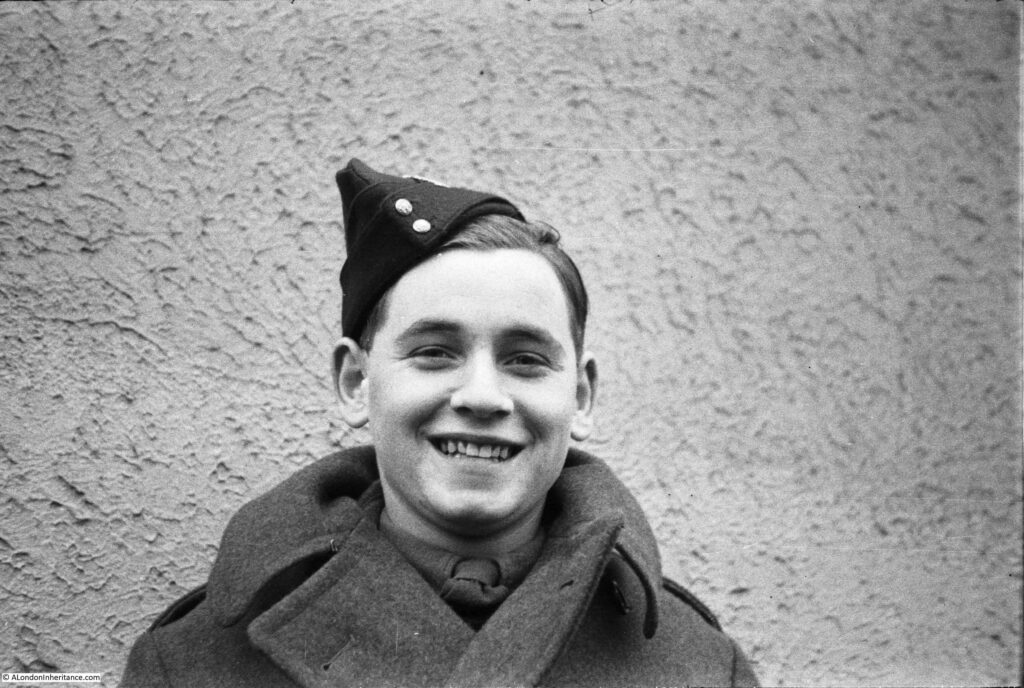

There was a note to the following photo which read “troop of 18 and 19 year old National Service recruits leaving for a p*** up” :
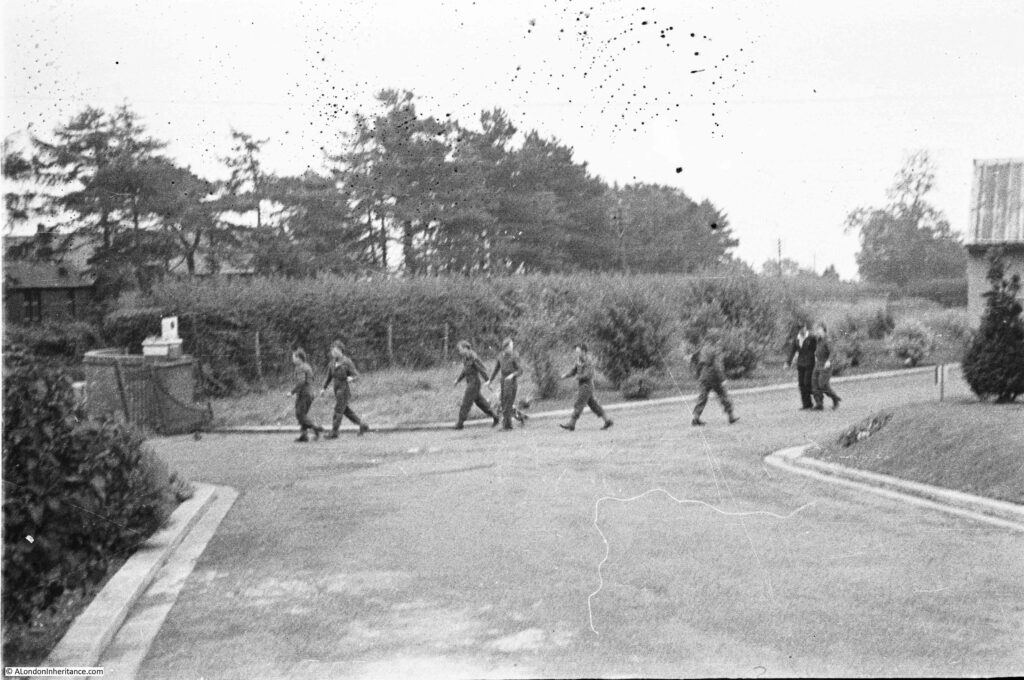
As well as the Military Hospital in Chepstow, there was also a local Army Training Centre and Chepstow Racecourse had been used to hold German Prisoners of War.
I have not yet been able to find the location of the Military Hospital. The following photo was taken from the entrance, looking into the site:
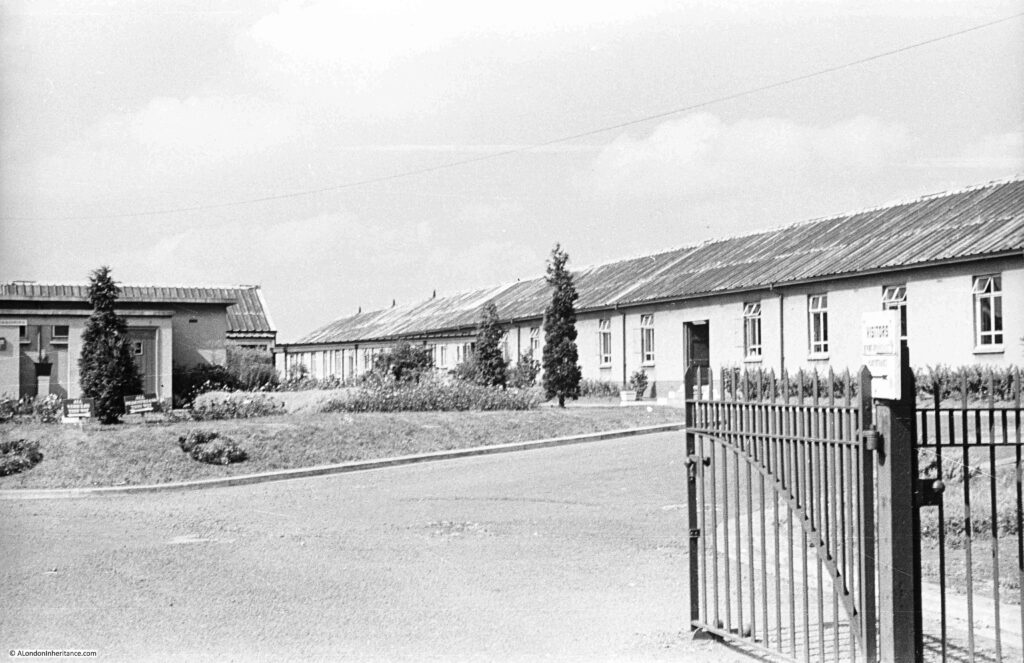
Group photo:
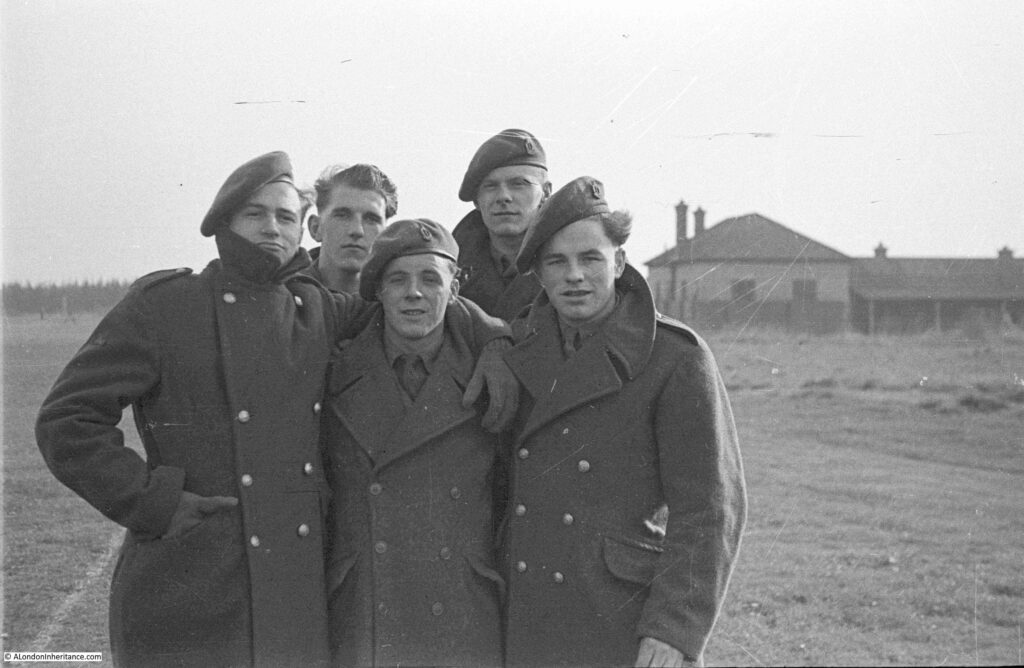
Today, we take millions of photos on mobile phones. These get saved on the phone, stored in Apple or Google’s cloud storage service, or used on Facebook, Instagram or Twitter. I suspect an incredibly small percentage get printed.
I do wonder what will happen to all these photos in the years to come. Will someone in 74 years time be able to access your photos? Will Facebook, Instagram, and even Apple and Google still exist in 74 years time. Will descendants have access to the accounts of today’s users?
The fact that Facebook may not exist may seem fanciful, however, consider the technical, cultural and social changes between 1947 and 2021, as well as how many companies have lasted those 74 years.
All these photos have been scanned from 74 year old negatives. Recovering them is basically shining a light through them using a scanner. If the source material still exists there is nearly always a method of recovering the data, although this can be incredibly difficult given format changes (for example the BBC’s 1984-6 Doomsday project which created laserdiscs of material to produce a new “survey” of the country to mark the 900 year anniversary of the original Doomsday book. A significant amount of work was needed to access the data stored on these discs, following the end of production of laserdisc players, a technology, like Betamax that only lasted for a short time).
Football:
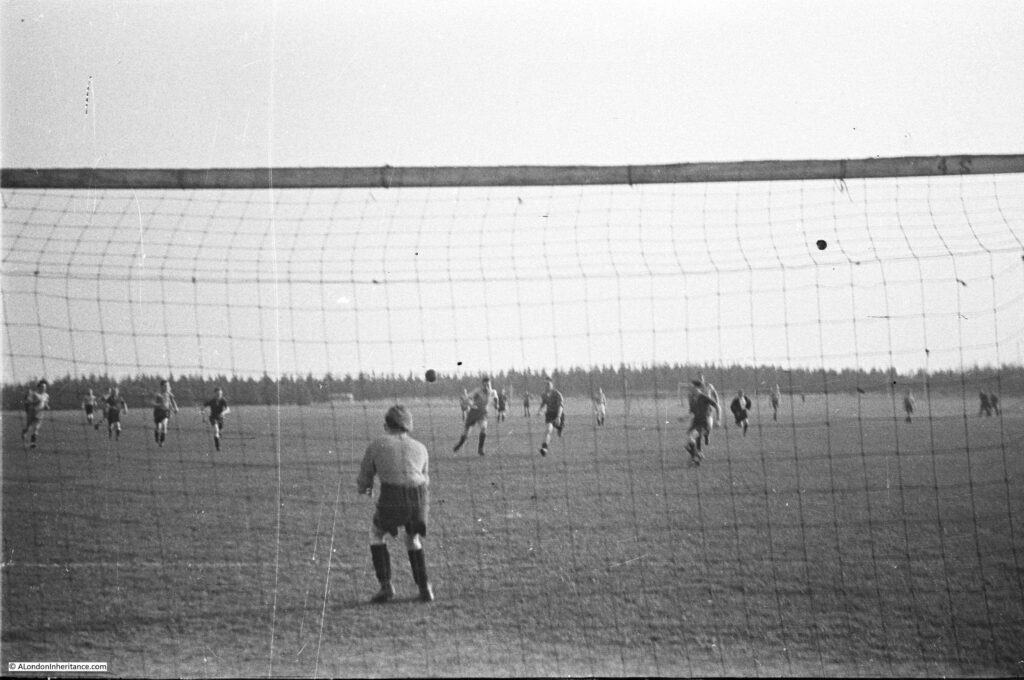

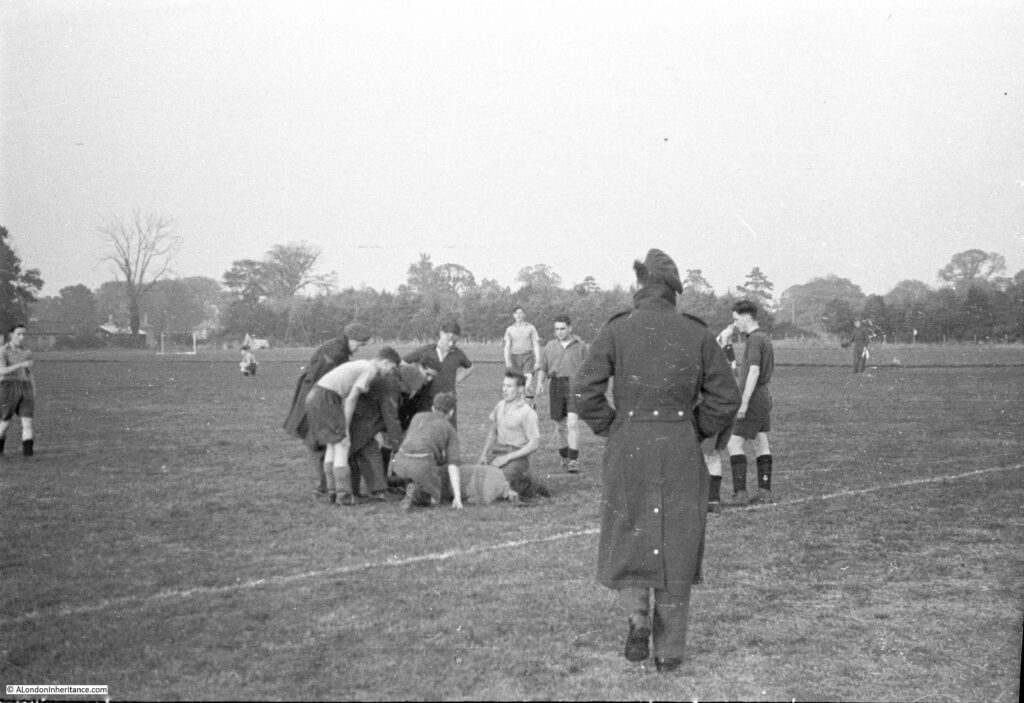
There seems to have been a reasonable amount of free time, as many of the photos show:

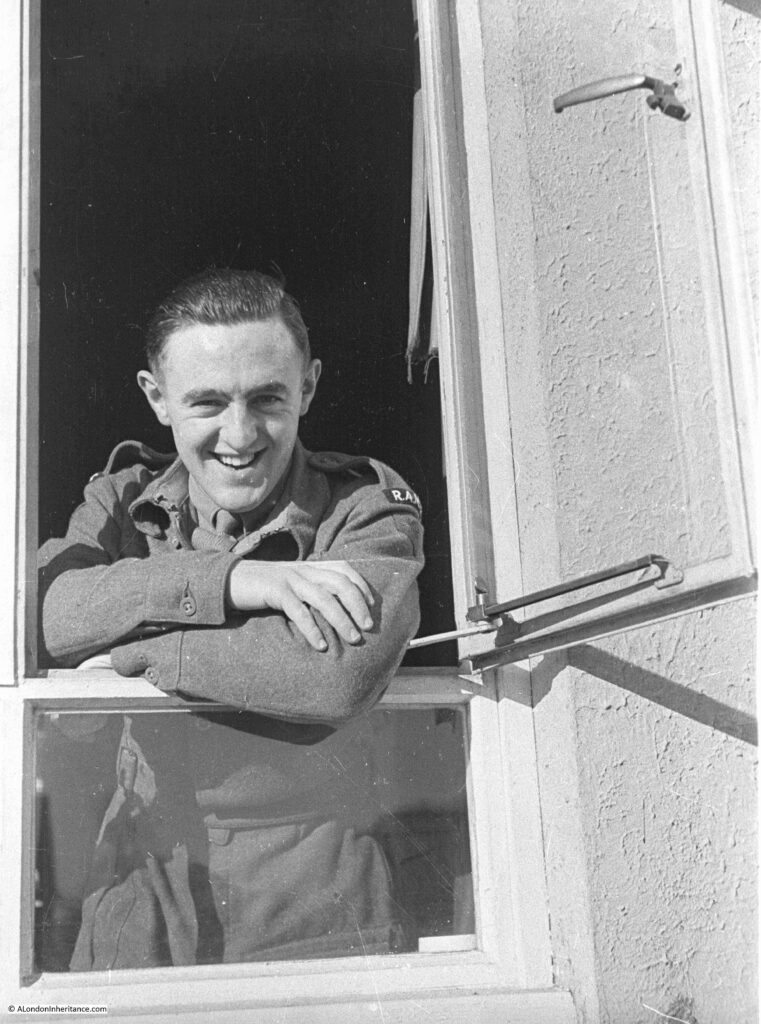
Cleaning and maintenance work appears to have been one of the duties at the hospital for National Service recruits:
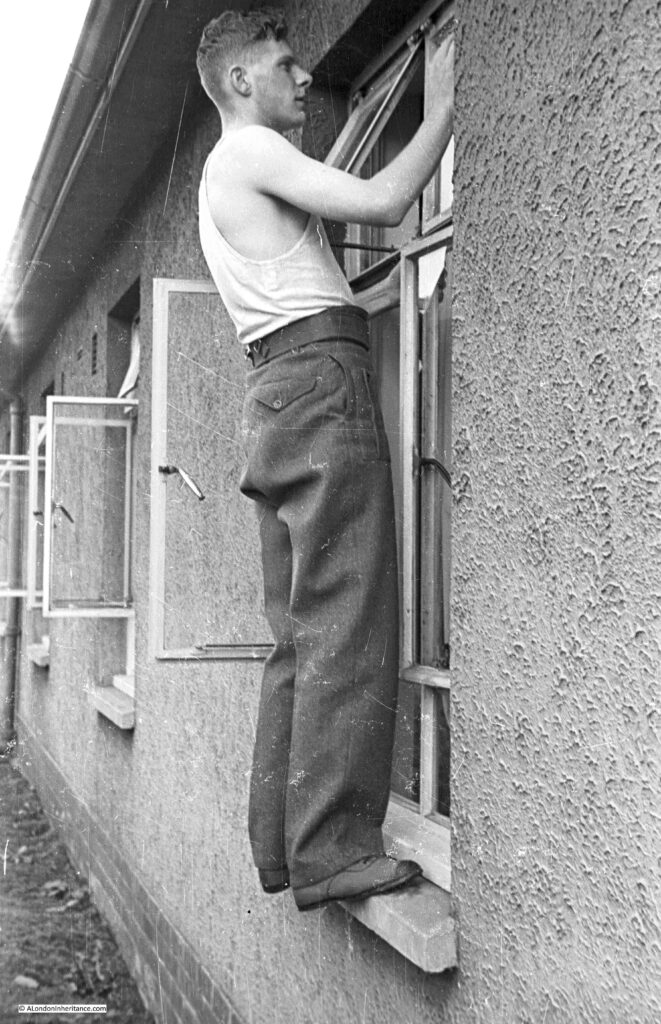

Different uniforms for nursing staff:
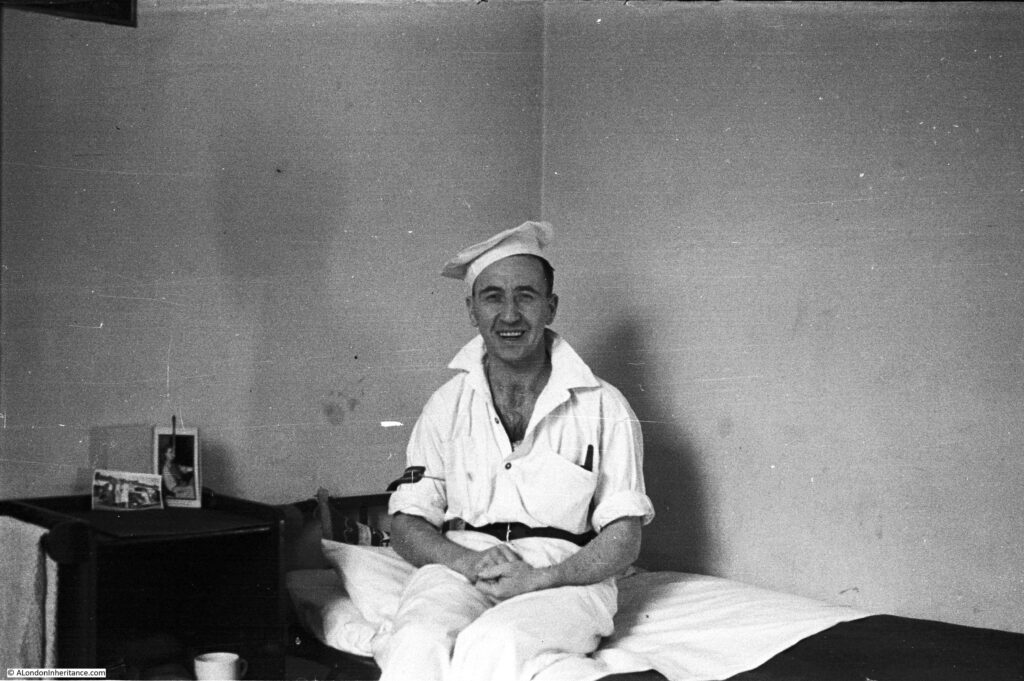
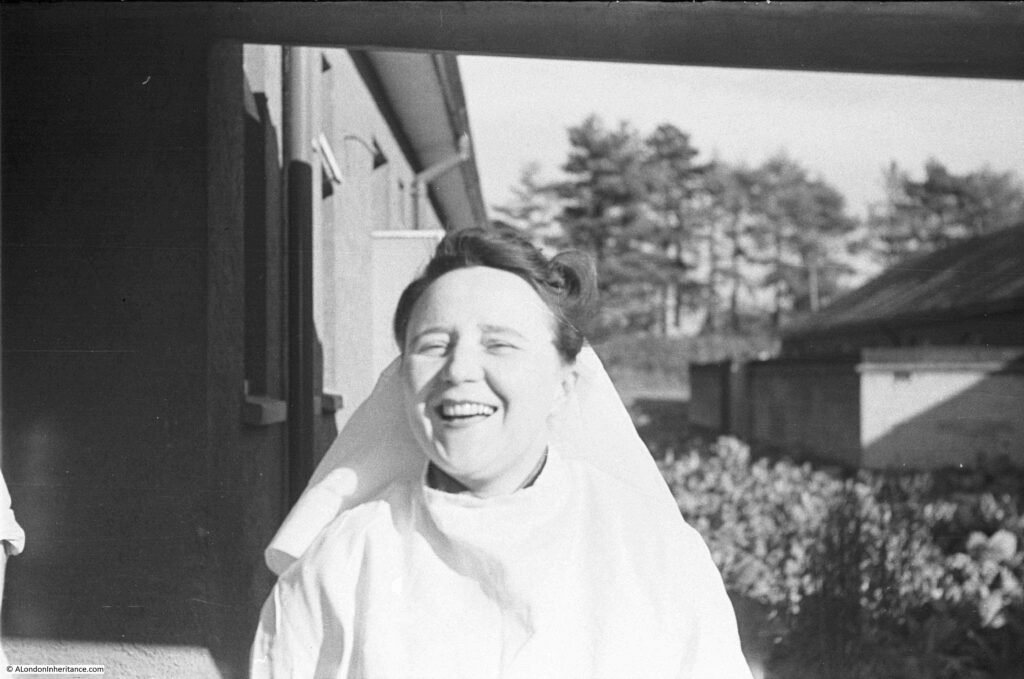
Many of the photos are just messing around in uniform:
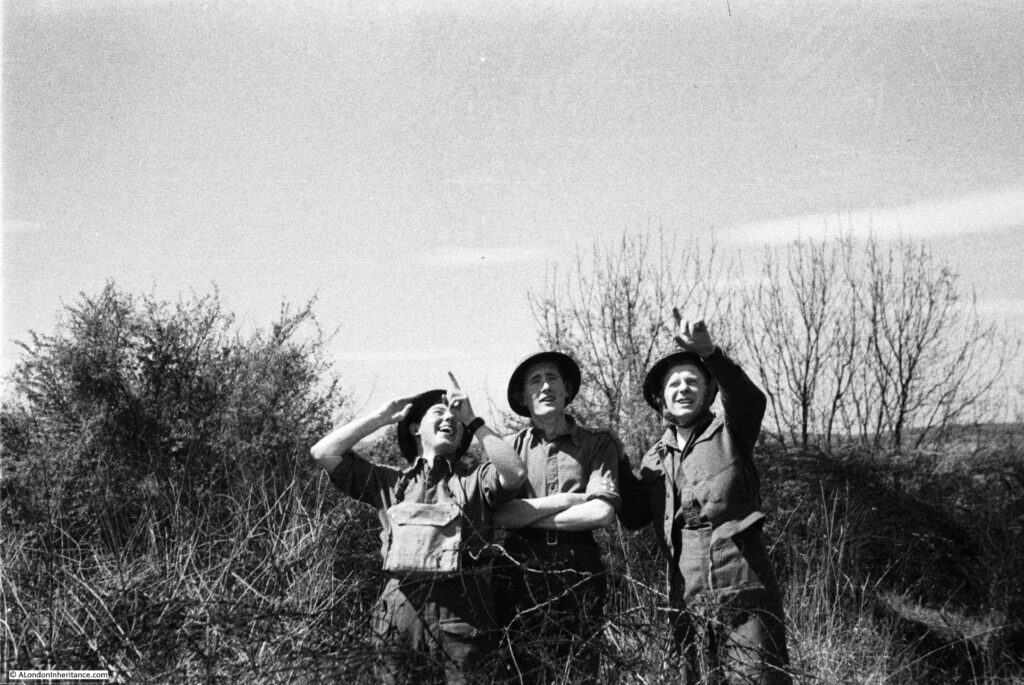
Including attention to a casualty:
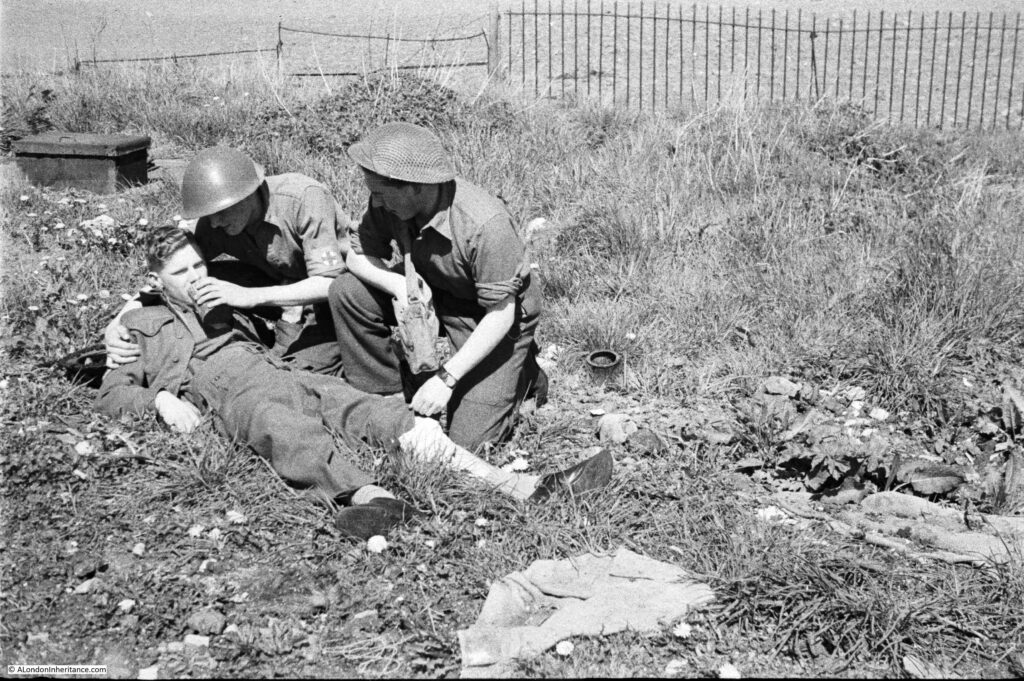
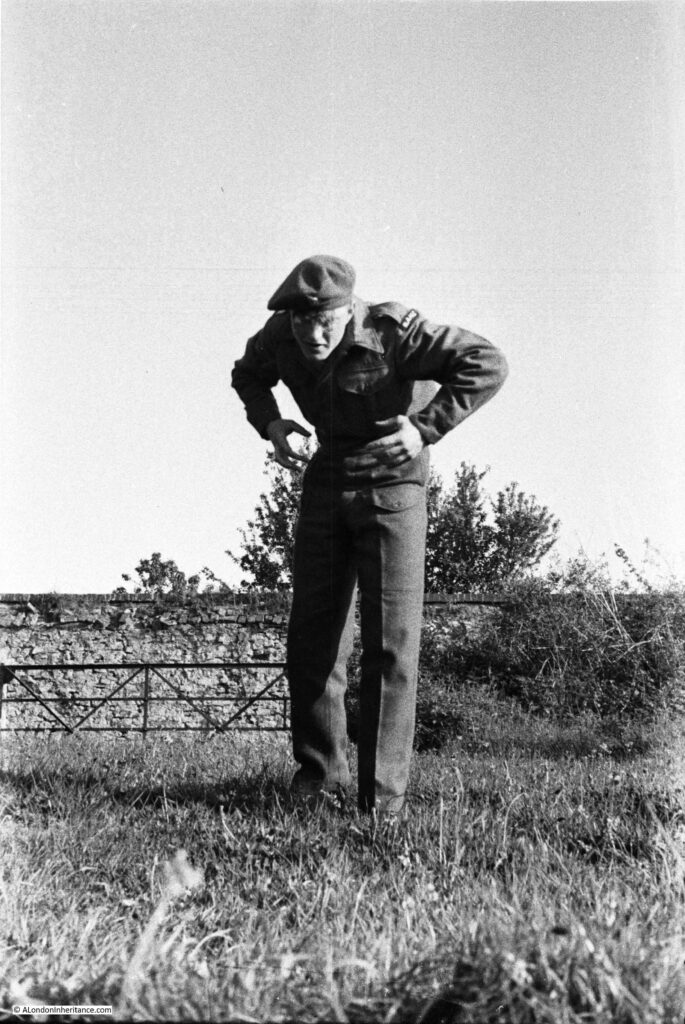
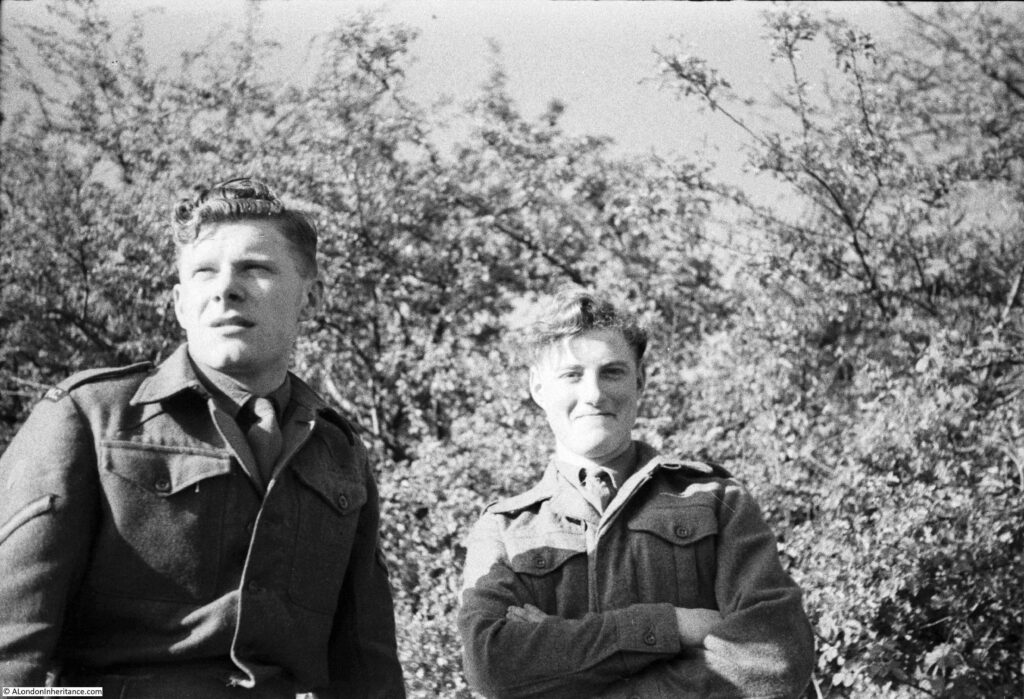
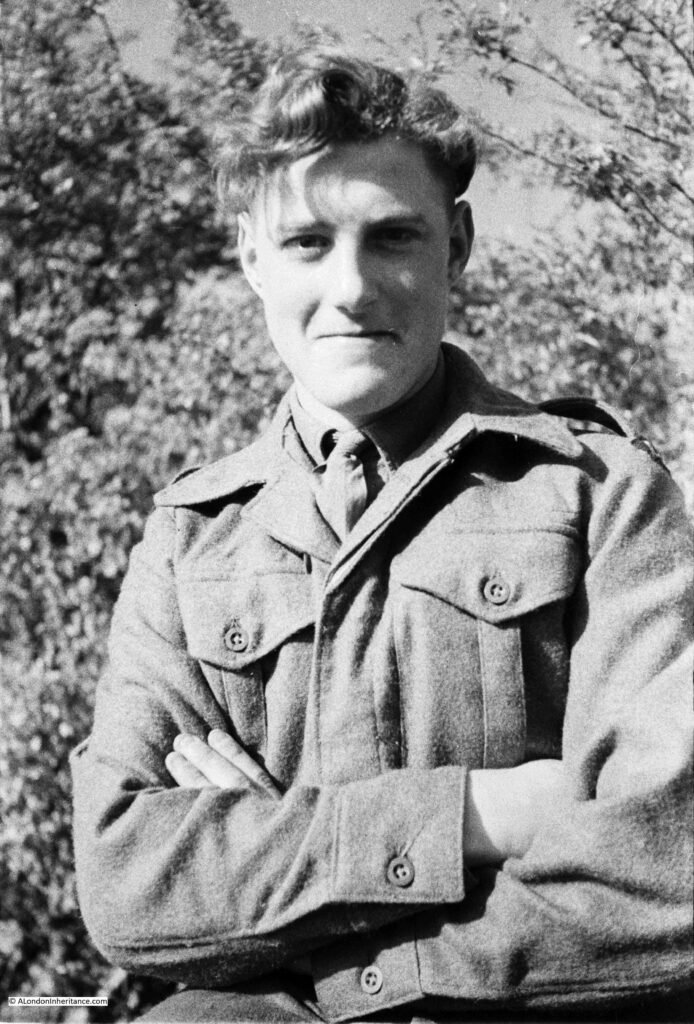
The Military Hospital appears to have had a division between medical staff and those on National Service who were there in support roles. Guarding the hospital (although I doubt there were many problems at a hospital in south Wales after the war), driving military ambulances, general maintenance of the site and administration, which seems to have been one of the core tasks.

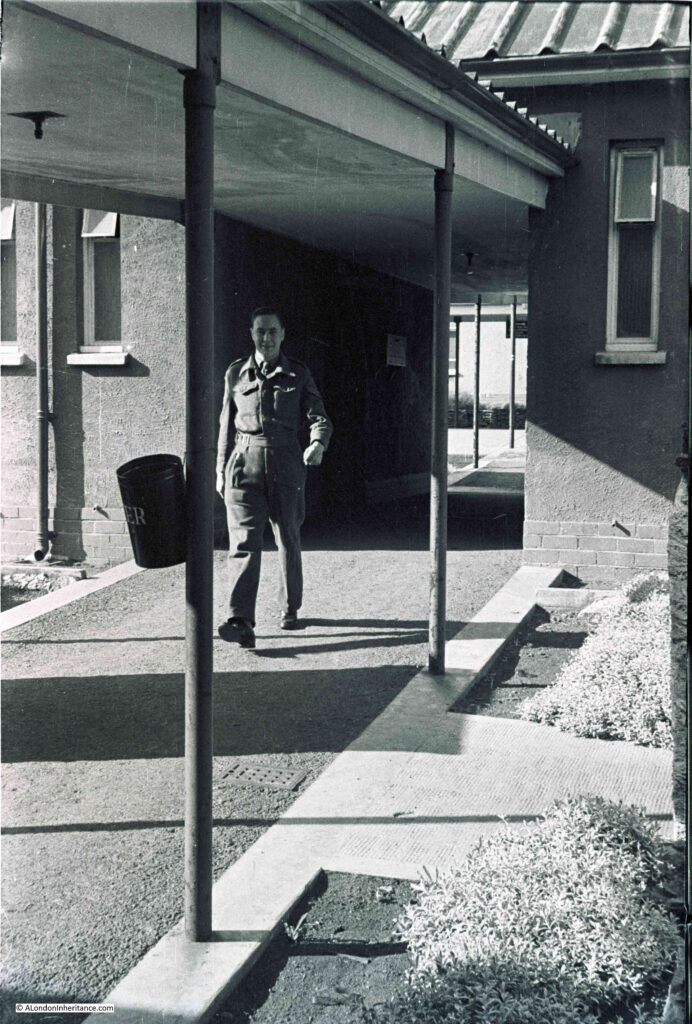
Thoughtful staring into the distance:
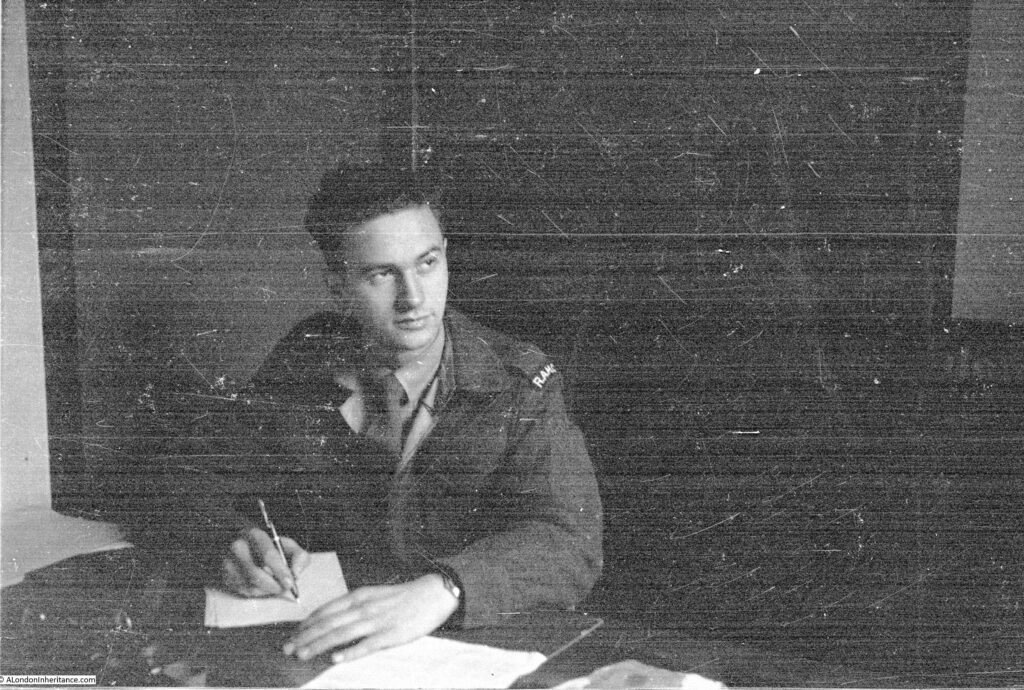
Ferry in the Bristol Channel:
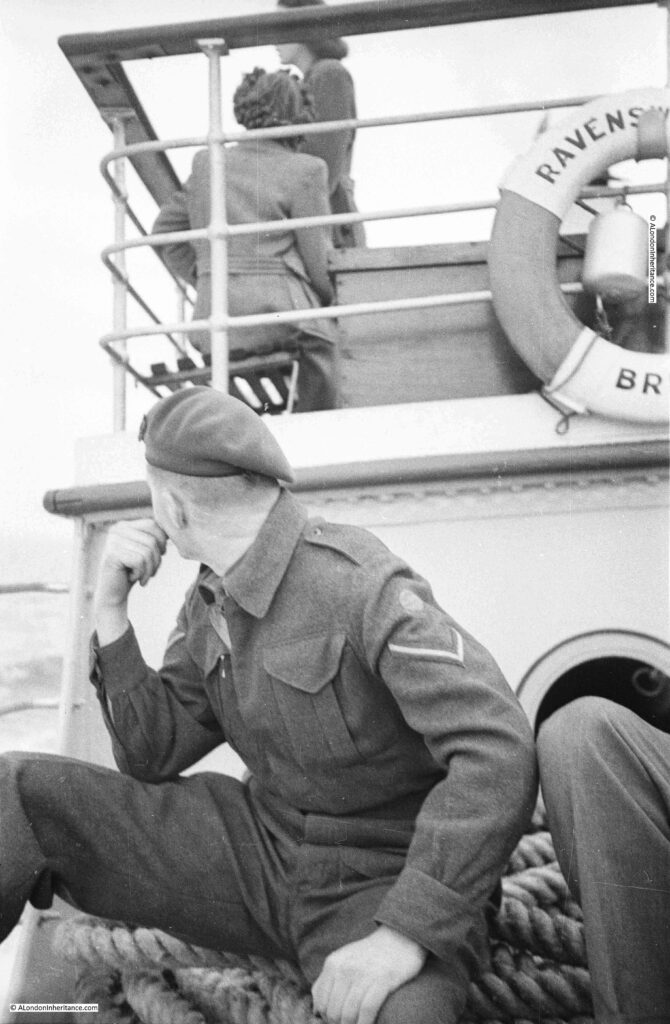
Apparently, cleaning the pond was a penalty for some minor misdemeanor:
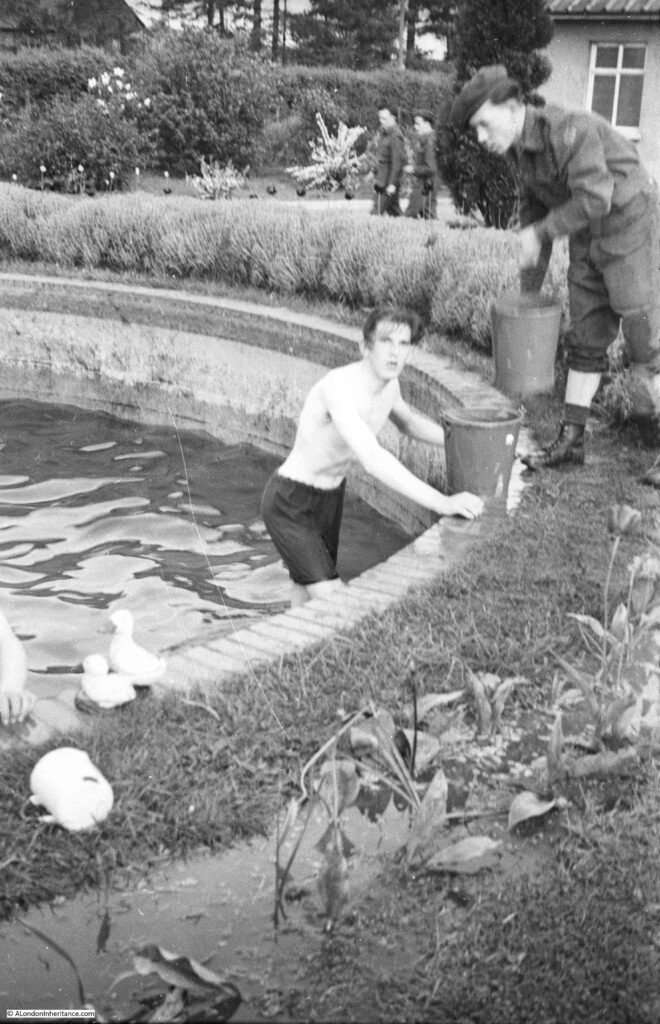

The pipe – adding an element of seriousness to the photo:
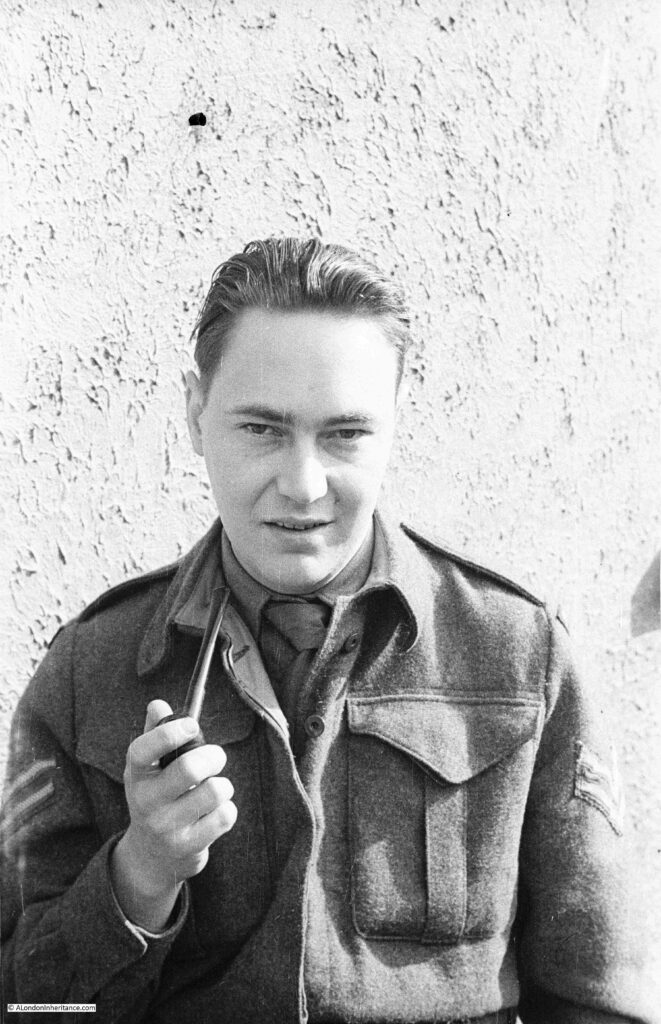
Medical staff:
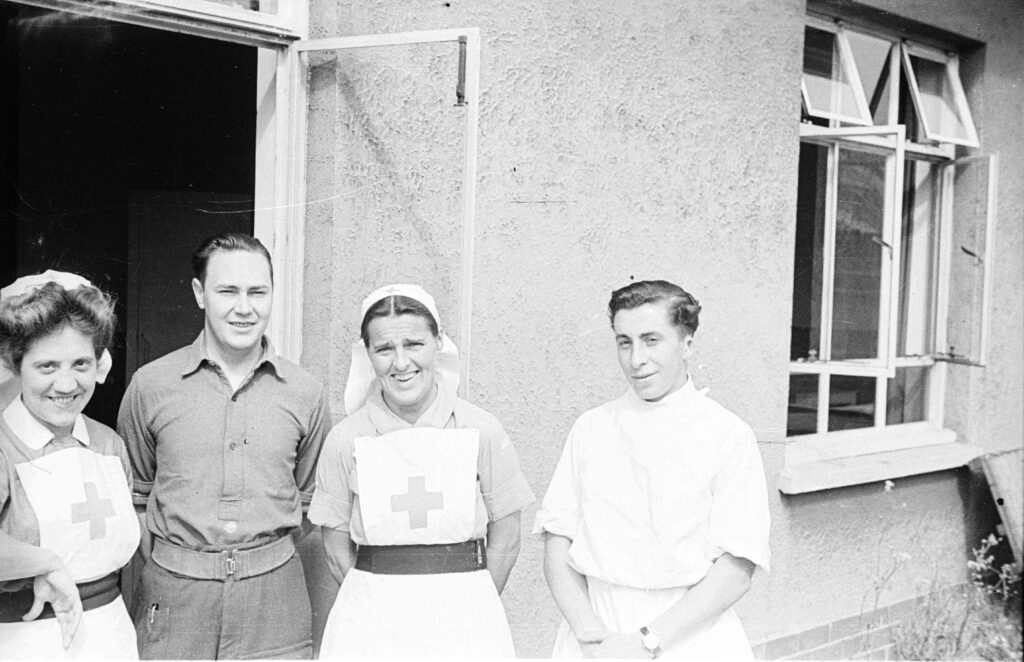

Group photo with the military ambulances behind:

Out and about – Chepstow Castle:
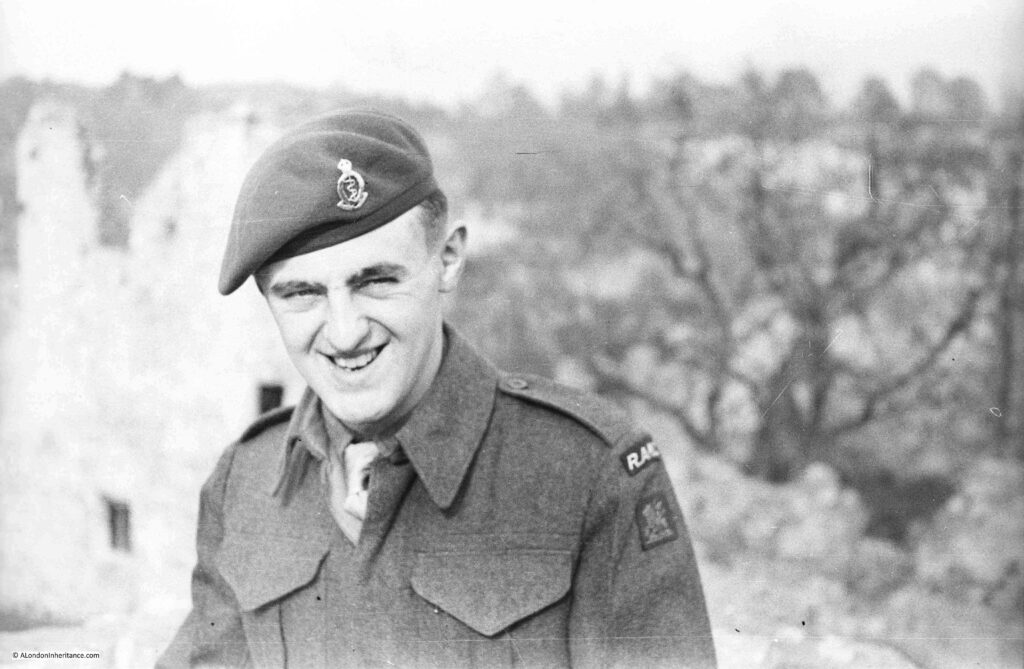
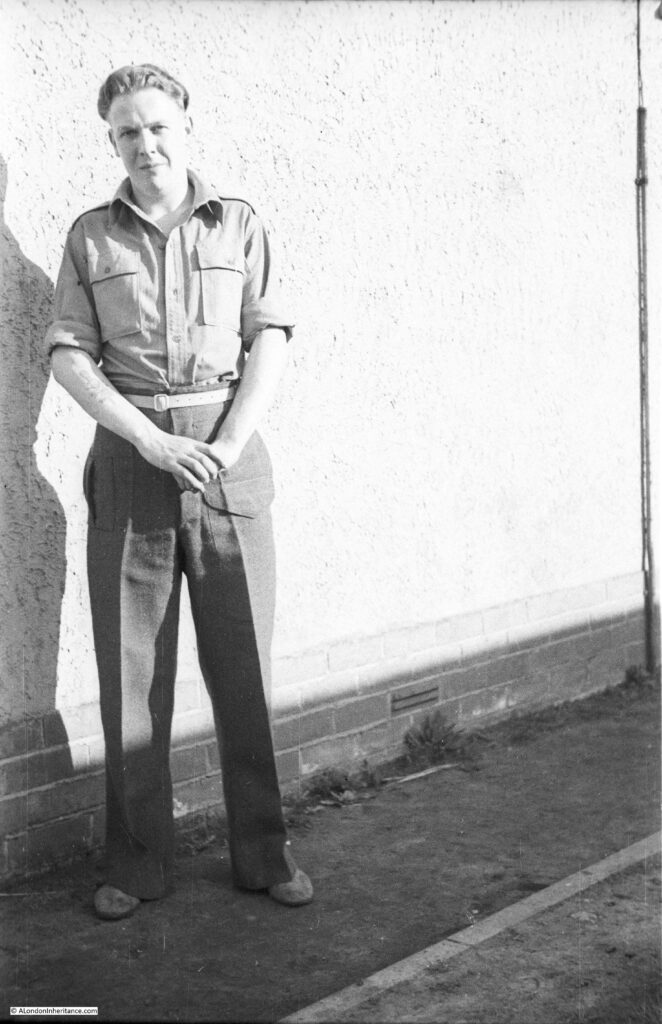
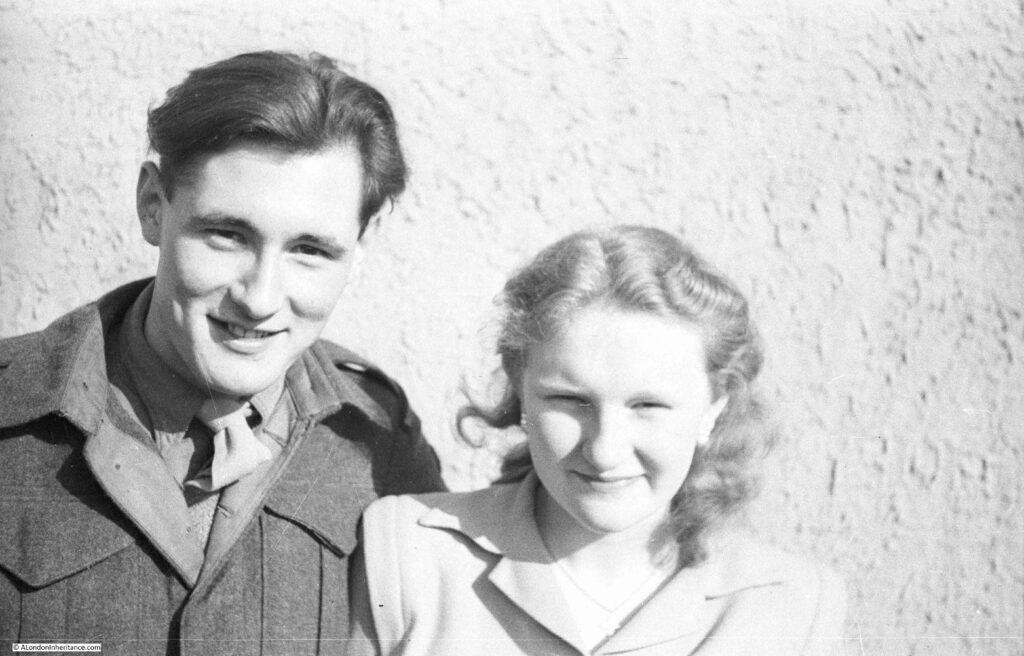
Looking to the future:

I do know that a number of those in the photos were from London, and for the majority, apart from short trips, National Service was their first time away from the city for a substantial period of time.
If still alive, the youngest would be in their early nineties, and they would have had a life time of experience since their time in Chepstow.
The photographer and his camera – how to take a selfie in 1947:
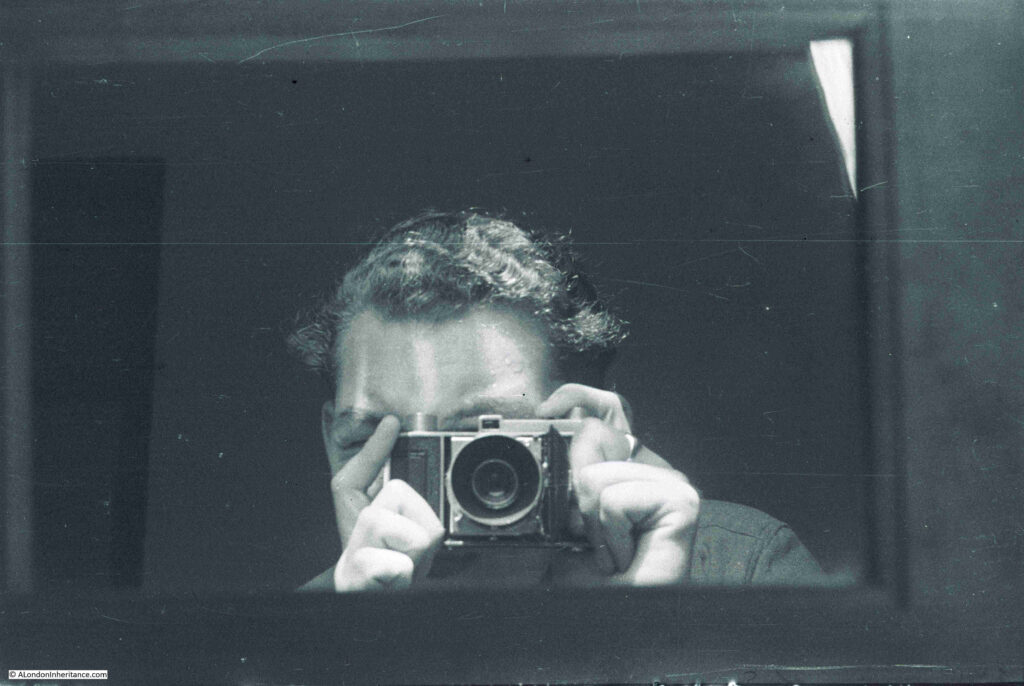
Whilst serving at Chepstow, there were a number of local trips and so far I have written about:
The Newport Transporter Bridge
As well as the original negatives, these photos are now in digital form.
For all my photos and scans, I keep multiple copies on different devices at home, and use a paid for offsite backup service as the ultimate backup of several terabytes of photos and scans going back 75 years.
I have no idea whether the digital versions will still be available and viewable in 74 years time, however I suspect the negatives, safe in their boxes, will still be able to reveal their everyday view of the mid 20th Century.

Admin, your post today was so interesting. I only have a few photographs that my Dad took of his time in the Army out in war time India and Burma. When browsing them I sometimes wonder if any of his mates are still around, then I remember that Dad would now be 102, so perhaps not.
However, it will be fascinating to read if anyone recognises these young men.
I too have lots of photos my Dad took in the RAF during the war in India and Burma. Some he wrote on the back as he sent them to my mum when they were corresponding . They married in 1947. My Dad would have been 100 next year. I hope I`ll pass them onto my family and they too will treasure them.
Fantastic photos thanks for sharing
Surprisingly I might be able to help with this. There used to be two hospitals in St Lawrence Road, which runs north-south from the racecourse roundabout to the roundabout at the intersection with Newport Road. On the western side was St Lawrence Hospital, which was IIRC some sort of innovative plastic surgery hospital. On the eastern side was what was known as Mount Pleasant Hospital, which I think is the one in your pictures. Both were situated at the junction with Mounton Road (Mounton being a hamlet a little way to the west).
I was brought up in Chepstow and lived there from 1970 until I left home. I used to visit a family friend in Mt Pleasant in the 1980s (he was an antique dealer who dropped a sideboard on his foot, ending in amputation because his circulation was so poor).
As I remember it, Mt Pleasant was still in its militarised state: consisting of Nissen huts and connecting tunnels, with plastic canopies across the doors to keep the rain out. I am fairly sure it was an all male hospital although I may be wrong. I haven’t delved into the OS map archive as I haven’t had my coffee yet, but you should be able to trace it from there.
Thank you for sharing these wonderful pictures. My father was about ten years older than the young men in these photos so his army service was overseas service, but his photos that I have are just like these – group shots and individual portraits where everyone smiles for the camera, and light and shadow give depth to to the picture and bring the subjects to life. Such a contrast with the flat images that today’s cameras produce.
(The picture of the pipe smoker has been flipped).
Here is the relevant OS Map sheet.
https://maps.nls.uk/view/189241860
‘Military Hospital’ on the map corresponds to what I knew as St Lawrence Hospital but I am going to have to study the angles in your photos more carefully before I am confident of which side of the road we are on.
A lot of reading this morning as I have just caught up with last week’s Soho piece! Great contrast in content but both so interesting and equally relevant in terms of social history and insight into lives fading from view. I love these articles.
PS Well spotted, David Cook!
I loved these photos. My father died just over a week ago and I found a great cache of his photographs, taken from when he joined the RAF in 1947. They aren’t nearly so well composed as these but they have the same kind of youthful authenticity as these. No selfie pouts, all the smiles (and indeed other expressions captured) are genuine. Thank you for sharing them on here. I love London and its history but I always enjoy your occasional diversions.
I too have photos my Dad took in India in 1935/6. He was with the 1st KSLI, Kings Shropshire Light Infantry. He was only there for a short time as they discovered he was deaf in one ear so he was sent back to UK. I know that he was in Northern India as there are photos of the Himalayas as well as some taken in the barracks.
What lovely faces and how poignant for you to see your dad so very young and full of life. Eighteen and nineteen year olds in these photos look so much younger than todays late teens, much less self conscious and guarded ( the curse of selfies ?)
I see why my great aunts used to bus it from Llandogo to the dances at Chepstow.
What fun they must have all had. This was not only the first time these lads had lived in a different part of the UK but also for many of them the first time living away from their parents. Chepstow was a lovely place to serve your National Service out. Not so lucky for other youngsters; my dad’s friend was sent to Korea in the early 50s where there was still fighting and deaths.
Fabulous photos – my wonderful Dad did his NS at Beaconsfield as a Sgt/Instructor at a radar training centre – he was a teacher just out of Durham University in (I think) 1952….
Such evocative photos of young people just beginnng their lives. Most probably long gone now. Youth is all so fleeting say I at 75
Your point on how long images will remain is rarely discussed. Remember Friend’s Reunited? Once upon a time a sizable proportion of the population belonged, and posted memories and images. All gone. The minute your account on Google, MS, Twitter of Facebook is deleted, so is the data it contained. I suspect at some point there will have to be serious discussion about preserving the early 21st century.
per “dGuide”, old St, Lawrence Hospital at 89 St. Lawrence Park. Various articles on web mention being demolished in 1994 for housing.
https://www.google.com/maps/dir//51.639,-2.69/@51.638782,-2.7602439,12z
In this county, the Oxfordshire History Centre has online collections of photographs :-
https://www.oxfordshirehistory.org.uk/public/
I am sure that other county record offices and archives have similar collections.
Have you considered donating (or loaning) a sample of your father’s digitised photographs to such a repository ?
The problem with online storage of such photographs is folks, in the 2090s, knowing their storage location and having the necessary passwords. I can also see a scenario whereby Google, Amazon, Microsoft etc, at some point in time, delete all files stored in free storage that have not been accessed in the last xx months. The pace at which collections are growing will inevitable ensure that free storage is restricted at some time in the future.
Here’s Google’s current policy on inactive accounts. Other companies can be assumed to have their own policies of this type.
https://support.google.com/accounts/answer/3036546?hl=en
How marvelous. I was born in 1947.
Here’s the link to an OS map (probably c. 1949) showing the hospital:
https://maps.nls.uk/geo/explore/side-by-side/#zoom=15&lat=51.63954&lon=-2.68722&layers=193&right=osm
I follow with much interest your descriptions and photos of parts of London. I was wondering if your father may have captured images of Southwark Park just after the war. The reason for asking is that my wife was born in one of the “huts” in Southwark Park in 1947 but I have yet to find any photos online of these huts. Apparently these were ex-army huts and were then used by the homeless after the war. My wife’s family consisting of six children lived there for a short time before moving to Wapping.
Aerial shot of the Military Hospital from the National Museum of Wales archive. Compare with the OS map linked above.
https://museum.wales/collections/online/object/63298810-a7bb-3060-9b6d-88002b087c4d/Chepstow-film-negative/?field0=string&value0=chepstow%20castle&field1=with_images&value1=on&index=9
Very evocative pictures lovely to look at.
I only gave two photos of my father in the 8th army. One taken around 1942 shortly after he arrived in Egypt with his brother who’d been shipped out some months earlier. They’re standing in front of the Sphinx with one of the great pyramids in the background. Unfortunately his brother was injured at Alamein and never returned to the UK staying in South Africa. The other photo is of my fsther skiing in Austria just after the war in Europe had finished. It makes him look like an expert skiier, but he never went skiing in the rest of his life!